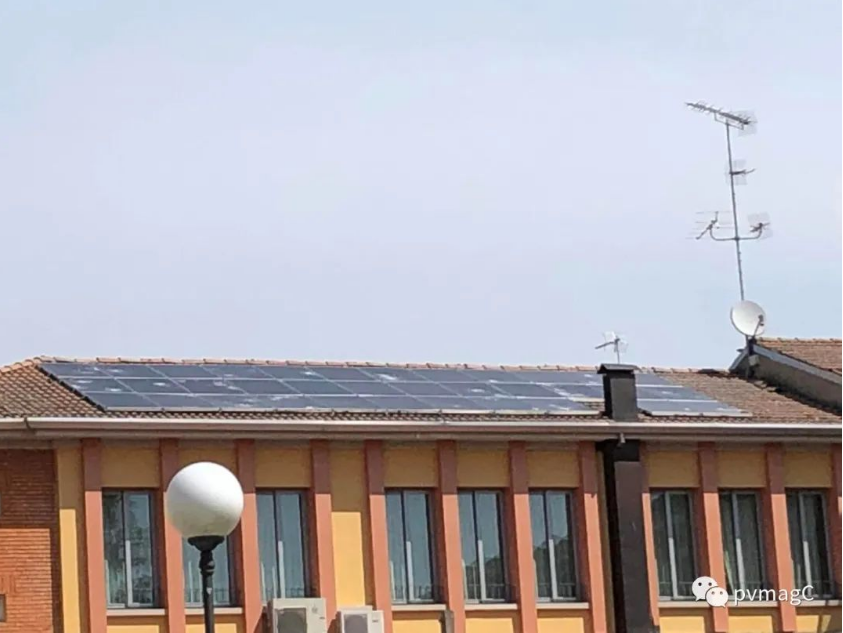
- English
- Español
- Português
- русский
- Français
- 日本語
- Deutsch
- tiếng Việt
- Italiano
- Nederlands
- ภาษาไทย
- Polski
- 한국어
- Svenska
- magyar
- Malay
- বাংলা ভাষার
- Dansk
- Suomi
- हिन्दी
- Pilipino
- Türkçe
- Gaeilge
- العربية
- Indonesia
- Norsk
- تمل
- český
- ελληνικά
- український
- Javanese
- فارسی
- தமிழ்
- తెలుగు
- नेपाली
- Burmese
- български
- ລາວ
- Latine
- Қазақша
- Euskal
- Azərbaycan
- Slovenský jazyk
- Македонски
- Lietuvos
- Eesti Keel
- Română
- Slovenski
- मराठी
- Srpski језик
How big a hailstorm can damage a photovoltaic system?
A recent hailstorm in northern Italy damaged several photovoltaic systems. A 2019 report obtained by Italian pv magazine from the Vrije Universiteit Amsterdam analyzes the impact of a severe hailstorm in the Netherlands in 2016, revealing the impact of hail on solar installations. destructive. According to their assessment, the damage to photovoltaic modules mainly comes from hailstones with a diameter of more than 3 cm.

Recent hailstorms in northern Italy have brought attention to the damage these violent sudden atmospheric events can cause to photovoltaic systems. Some system owners posted photos of the damaged facility on social networks, clearly showing the intensity of the hailstorm and, above all, the size of the hailstones, some of which reached 20 cm in diameter.
So, how large a hail particle can cause damage to a PV system? How large a hail diameter can be considered a critical threshold beyond which damage becomes significant?
The Italian pv magazine attempts to answer these questions by citing a 2019 report by the Free University of Amsterdam (VUA), which examined insurance loss data for the historic hailstorm that occurred in the Netherlands in June 2016.
According to the conclusions of Dutch researchers, the damage to solar panels is mainly caused by hailstones with a diameter of more than 3 centimeters. They explain in their paper Vulnerability of Solar Panels to Hail: "Larger hailstones (above 4 cm) are more damaging on average than smaller hailstones, and they are also more damaging to solar panels. There is a big difference."
When the diameter of the hailstone reaches 3 cm, both recessive and dominant damage may occur. Once the diameter of the hailstone reaches 4 cm, the percentage of dominant damage will increase significantly.
The smallest cracks (micro-cracks) do not appear in the front glass layer, but in the silicon layer, so the initial damage does not affect the power generation efficiency of the panel. However, after a few months, there may be a rapid loss of power in the damaged area, and after about a year, microcracks can also appear on the outside of the panel. All damage reduces the lifespan of the solar panel.
The orientation of the roof relative to the hailstone greatly affects the damage to the solar panels from the hailstone, which may be more determinative than the size of the diameter of the hailstone, the researchers explained.
On the other hand, some experience has also shown that even the angle at which a solar panel is installed can affect its degree of damage in hail. According to the scientists' conclusion, a greater slope would help mitigate the damage.
The study also shows that the frequency of hailstorms is increasing in Europe and the Netherlands, as is the damage caused by hailstones. This suggests that exposed items, such as solar panels, may become more vulnerable in the future.
"Hail risk and the vulnerability of solar panels to hail should be incorporated into risk models and climate adaptation strategies," concluded the Dutch researchers.
